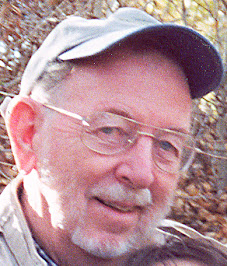 |
| Mother's Day Antiwar Protest In Front Of White House, 2006. Joshua Roberts/Getty Images |
I hope you looked up Sarah Corson’s “Welcoming the Enemy”
story to find out what the woman said. But if you didn’t, here is (very
briefly) the rest of the story: She said, “Welcome, brother! You don’t need
rifles to visit here. Everyone is welcome in our home.” And she must have said it very convincingly,
because the soldier (the leader of a squad of about 30 men) was willing to
listen to what else she had to say, didn’t kill anyone, didn’t take the whole
mission team prisoner (as ordered; the men were later released), came back to
visit again several times, attended their church services, was converted to
Christianity, etc.
Offering a nonviolent, welcoming, even loving, response to a
threat isn’t going to absolutely guarantee you will never get hurt, not in this
world. And we do see news stories reporting someone’s using a gun or other
weapon to repel or kill a would-be attacker. But realize that those stories are
just more likely to be reported than the many more cases in which a weapon
intended for defense is turned against its owner, or in which pulling the
weapon out caused a fatal attack. A
little book on this issue published in 1975 includes many examples of people
successfully using nonviolent responses to threats: Safe Passage on City Streets, by Dorothy T. Samuel (find it on https://www.abebooks.com/).
I will have more to say on this subject. But it is Mother’s
Day, so appropriate and relevant for me to share Julia Ward Howe’s Mother’s Day Proclamation. Our current
Mom’s Day observance was started in 1908. But the first proposal for a Mother’s
Day observance (to be held on June 2 annually) was made years earlier. Howe,
who had written the war-celebrating Battle
Hymn of the Republic in 1861 at the outset of the America Civil War, was so
horrified by the carnage that ensued that in 1870 she called for a “Mother’s
Day for Peace.” Here is her “Mother’s
Day Proclamation:”
Arise then...women of this day!
Arise, all women who have hearts!
Whether your baptism be of water or of tears!
Say firmly:
"We will not have questions answered by irrelevant agencies,
Our husbands will not come to us, reeking with carnage,
For caresses and applause.
Our sons shall not be taken from us to unlearn
All that we have been able to teach them of charity, mercy and patience.
We, the women of one country,
Will be too tender of those of another country
To allow our sons to be trained to injure theirs."
Whether your baptism be of water or of tears!
Say firmly:
"We will not have questions answered by irrelevant agencies,
Our husbands will not come to us, reeking with carnage,
For caresses and applause.
Our sons shall not be taken from us to unlearn
All that we have been able to teach them of charity, mercy and patience.
We, the women of one country,
Will be too tender of those of another country
To allow our sons to be trained to injure theirs."
From the bosom of a devastated Earth a voice goes up with
Our own. It says: "Disarm! Disarm!
The sword of murder is not the balance of justice."
Blood does not wipe out dishonor,
Nor violence indicate possession.
As men have often forsaken the plough and the anvil
At the summons of war,
Let women now leave all that may be left of home
For a great and earnest day of counsel.
Let them meet first, as women, to bewail and commemorate the dead.
Our own. It says: "Disarm! Disarm!
The sword of murder is not the balance of justice."
Blood does not wipe out dishonor,
Nor violence indicate possession.
As men have often forsaken the plough and the anvil
At the summons of war,
Let women now leave all that may be left of home
For a great and earnest day of counsel.
Let them meet first, as women, to bewail and commemorate the dead.
Let them solemnly take
counsel with each other as to the means
Whereby the great human family can live in peace...
Each bearing after his own time the sacred impress, not of Caesar,
But of God -
In the name of womanhood and humanity, I earnestly ask
That a general congress of women without limit of nationality,
May be appointed and held at someplace deemed most convenient
And the earliest period consistent with its objects,
To promote the alliance of the different nationalities,
The amicable settlement of international questions,
The great and general interests of peace.
Whereby the great human family can live in peace...
Each bearing after his own time the sacred impress, not of Caesar,
But of God -
In the name of womanhood and humanity, I earnestly ask
That a general congress of women without limit of nationality,
May be appointed and held at someplace deemed most convenient
And the earliest period consistent with its objects,
To promote the alliance of the different nationalities,
The amicable settlement of international questions,
The great and general interests of peace.

